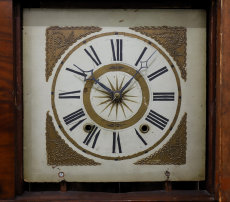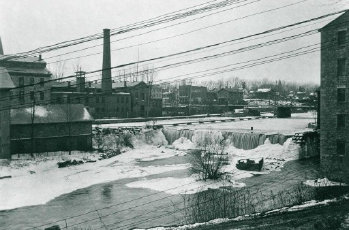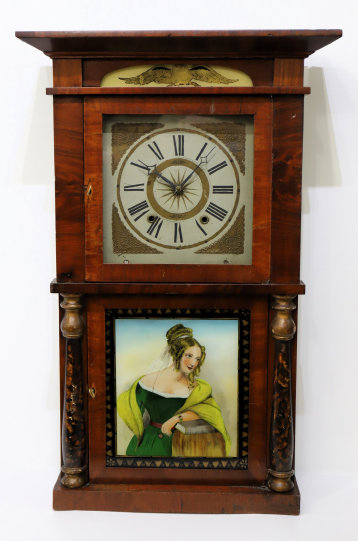
10. $200
Marshall &
Adams wooden works Empire, 1834-1836. A 33-inch mahogany-veneered case with three period glasses, including an original cornice
glass and a lovely, repainted tablet (probably by Lee Davis); this is one of my favorite tablets. The veneer is excellent, the
finish clean, and the tortoise shell columns are likely original. The column capitals and plinths were repainted long ago. The dial is dark, as is common for dials from these makers, but clean and held in place by screws at the bottom; the hands are period
and appropriate. The 30-hour wooden movement was likely made by Jeromes & Darrow. It will run for a few minutes and
will strike, driven by two proper weights and regulated by a period embossed pendulum bob. There is a battered and stained label
on the backwall, noting that the clock was made in Seneca Falls, NY. Seneca (later Seneca Falls) was founded around 1800 and
a canal to allow boat travel between Seneca Lake and Cayuga Lake was completed in 1815 along the Seneca River. The falls were
formed by this canal, where previously rapids were found. By 1828 the town was connected to the Erie Canal to the north; Seneca
Falls was incorporated in 1831. Chauncey Marshall arrived in 1828 and initially purchased a paper mill with two others; he sold
out and formed a clock manufactory with Elmer Adams in 1834. Both were Connecticut natives. Marshall was the financier,
Adams the clockmaker; Marshall left the firm in 1836, filed for bankruptcy a year later coincident with the panic of 1837, and committed
suicide shortly thereafter. Adams continued for a year and then filed for bankruptcy as well and skedaddled to Chillicothe OH
to avoid creditors. Marshall & Adams were prolific, making both wooden works and brass movement clocks in their few years. $200–$300.
Thanks to Russ Oechsle (An Empire in Time) for much of the history cited here.
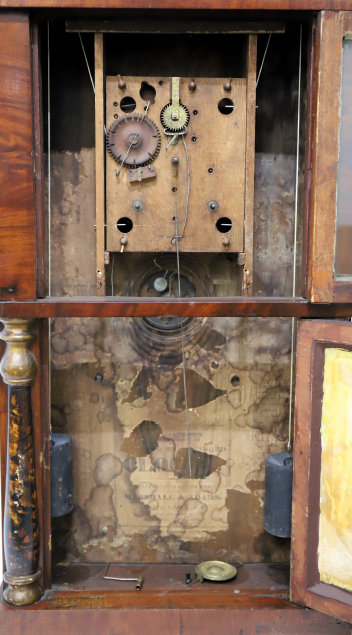
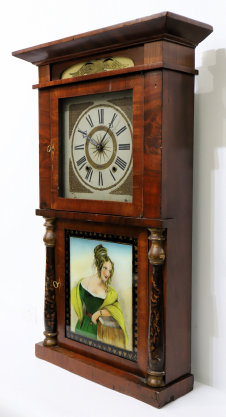


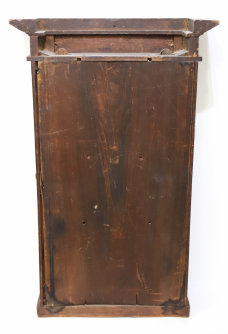
Antique American Clocks JULY 2024
